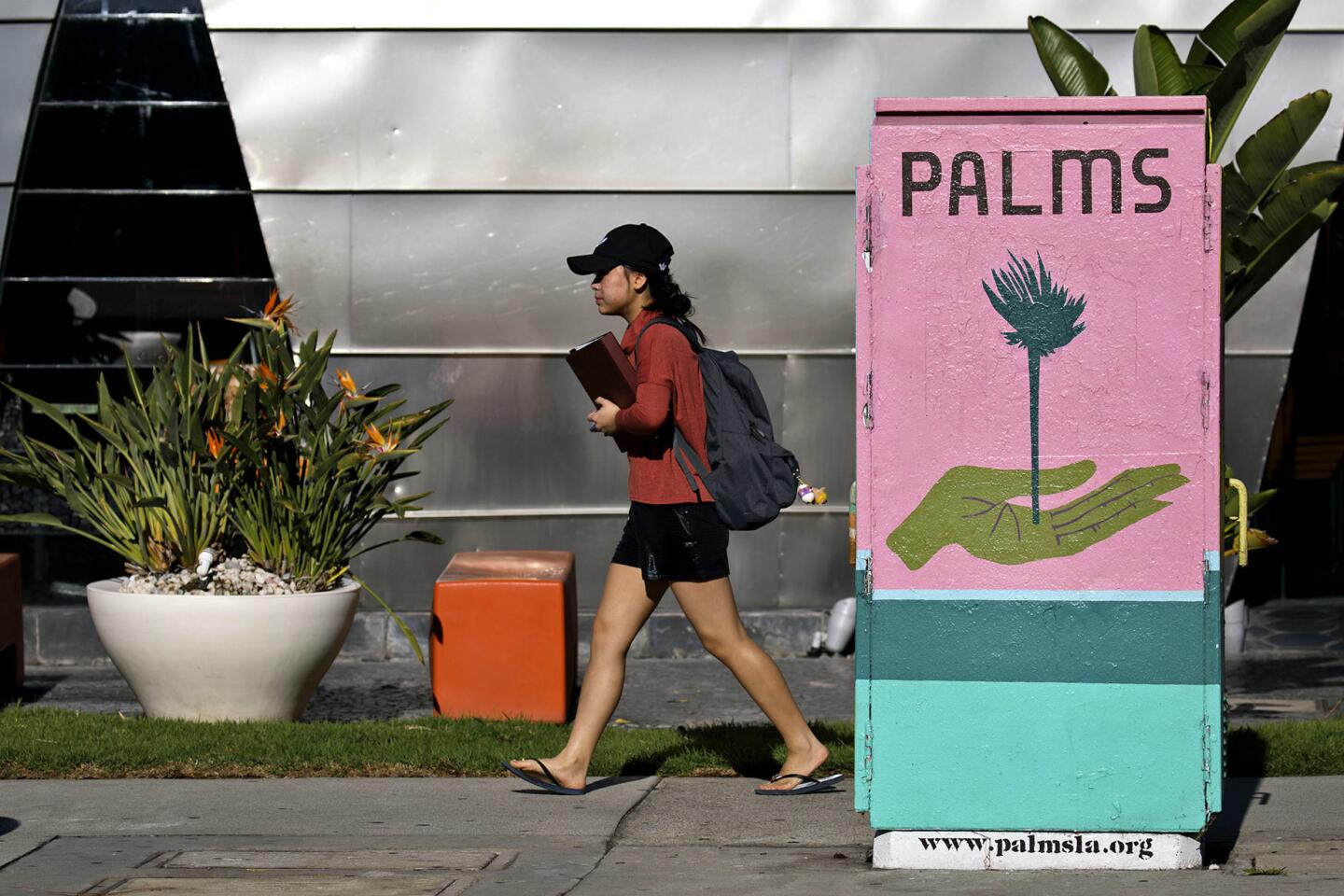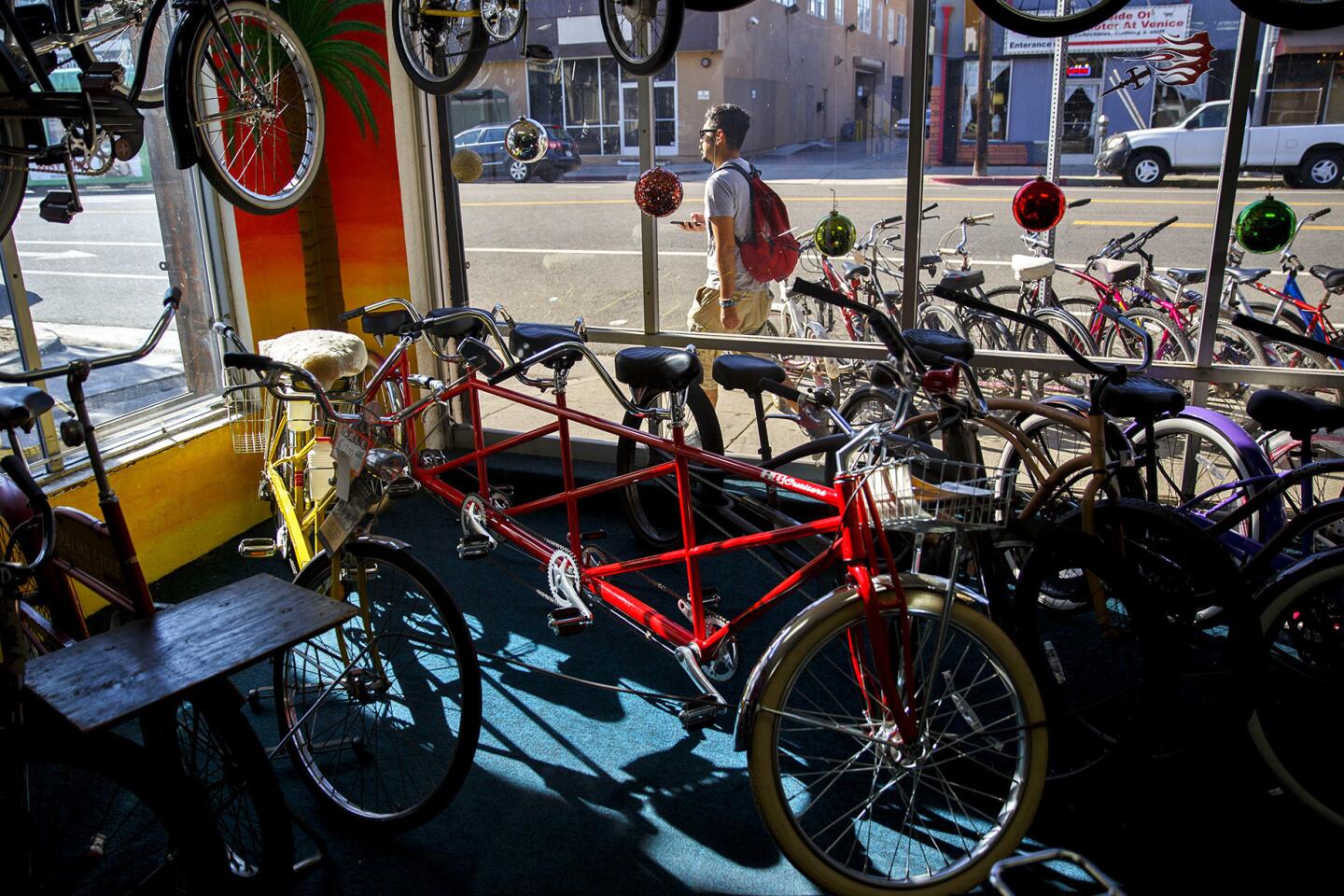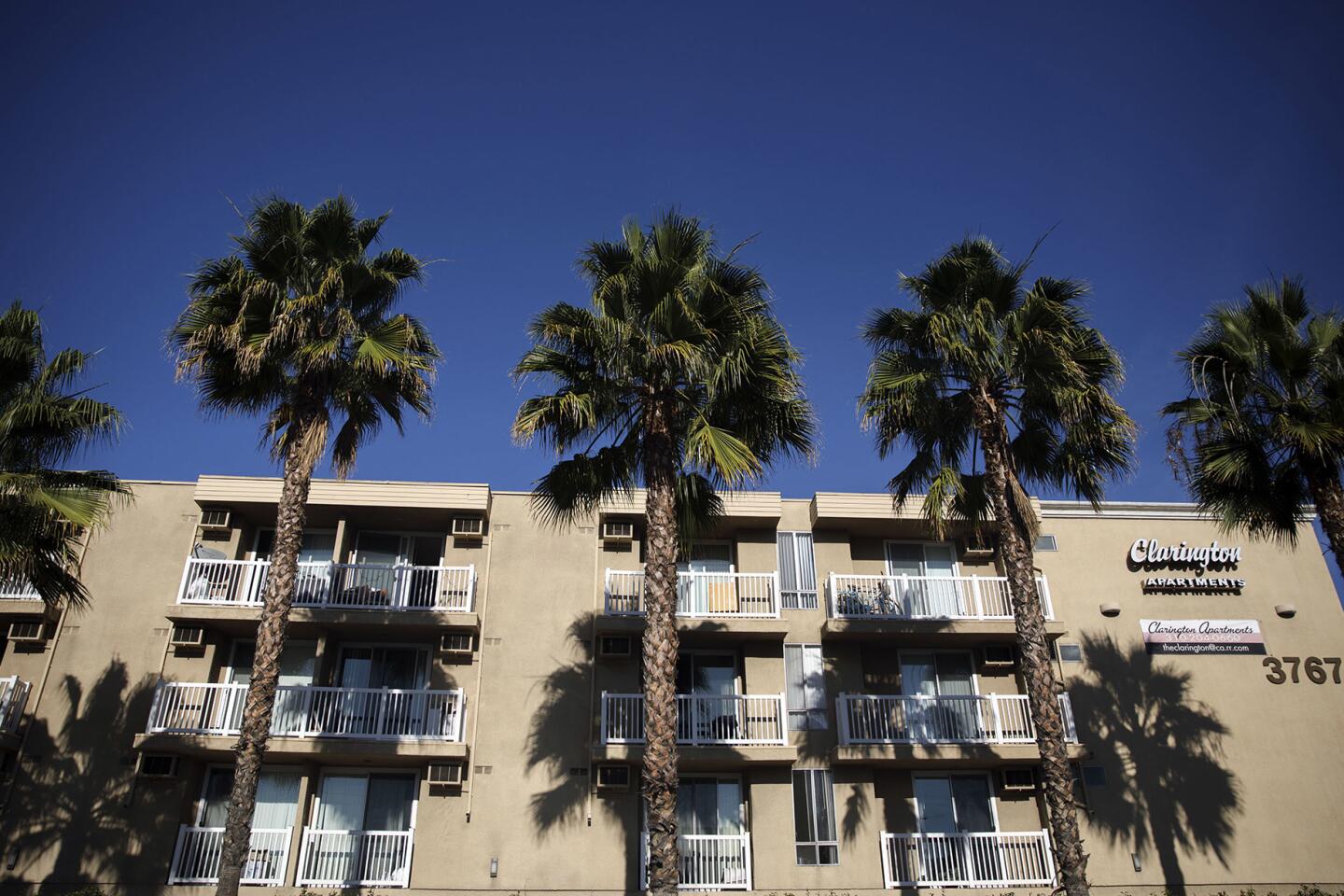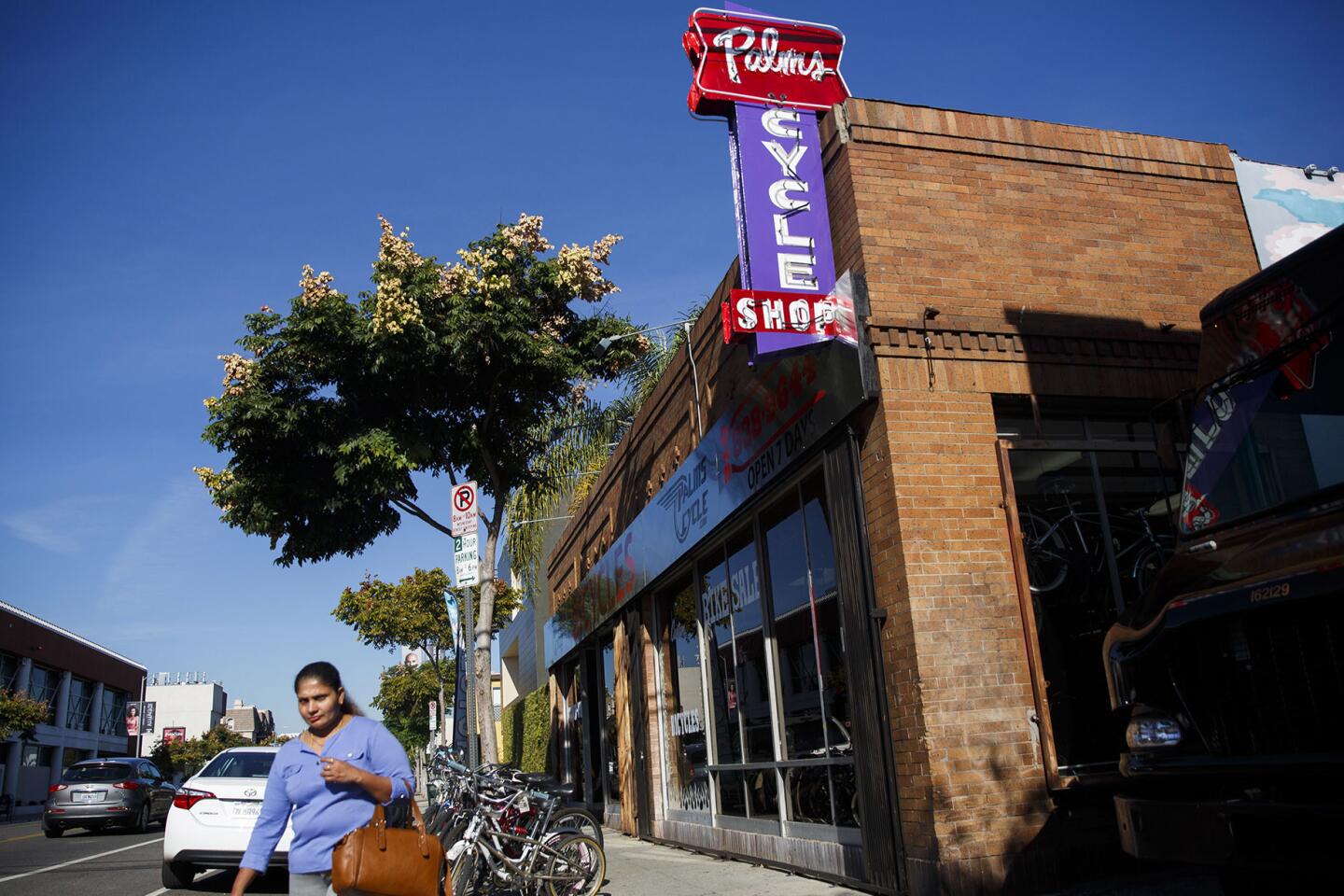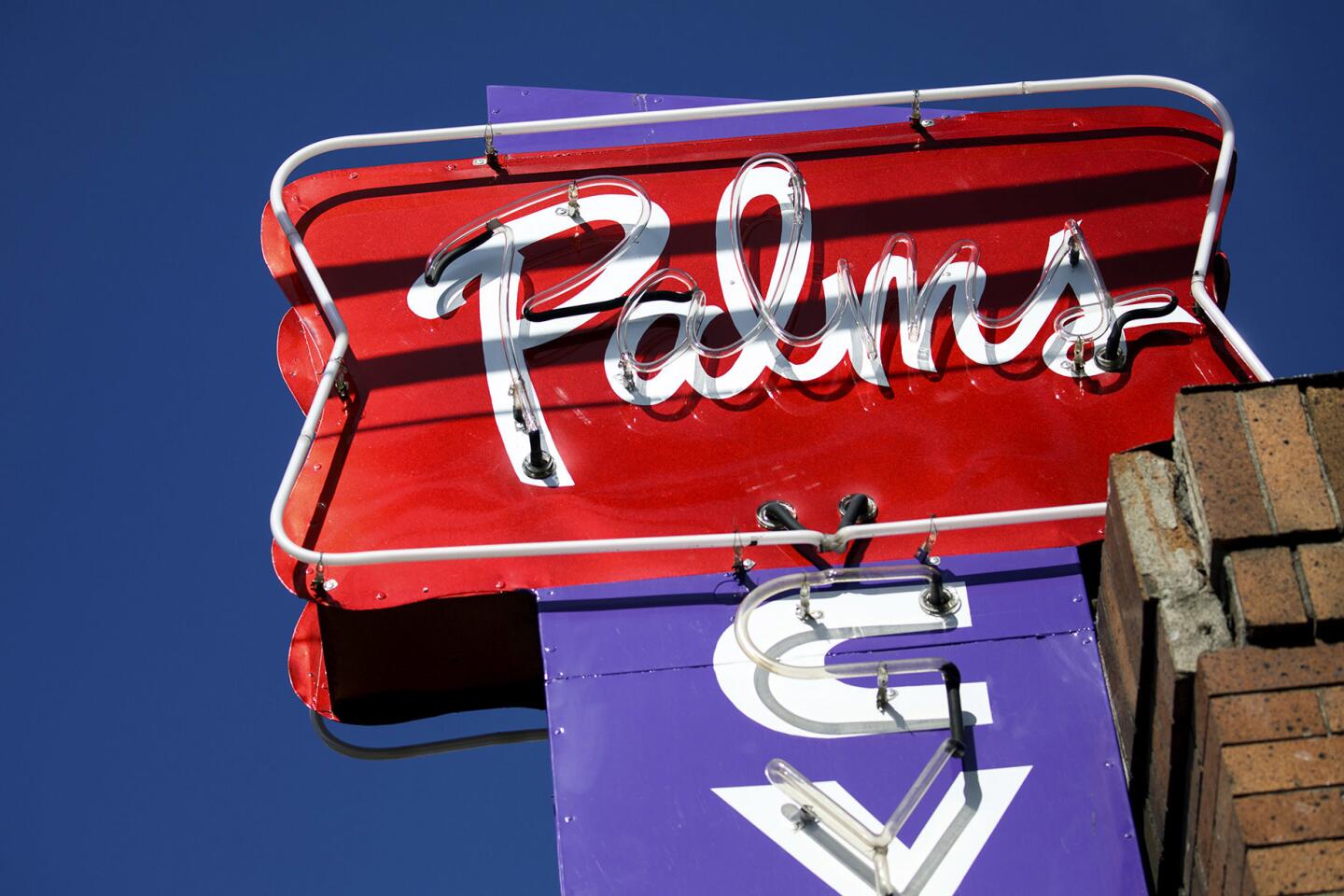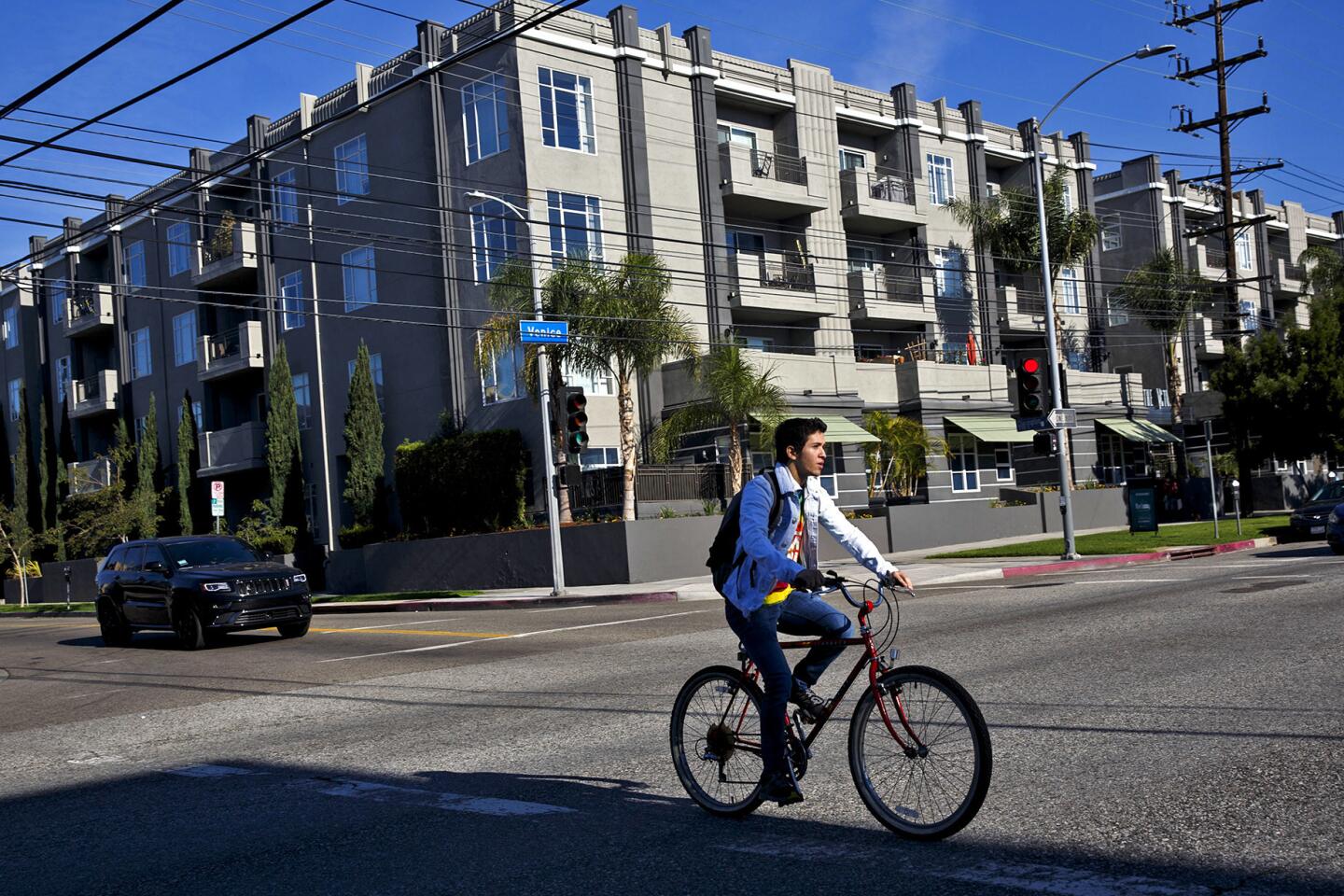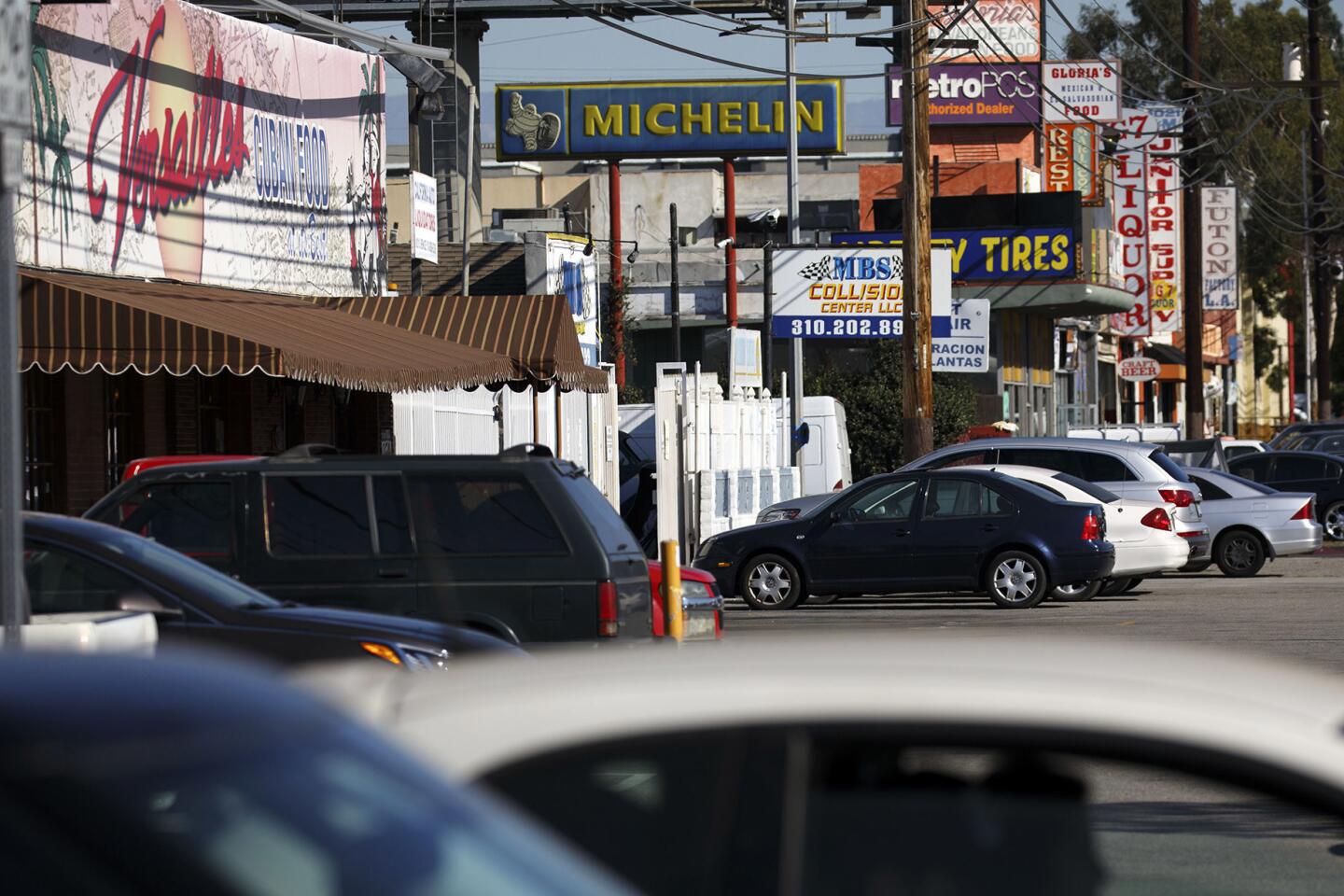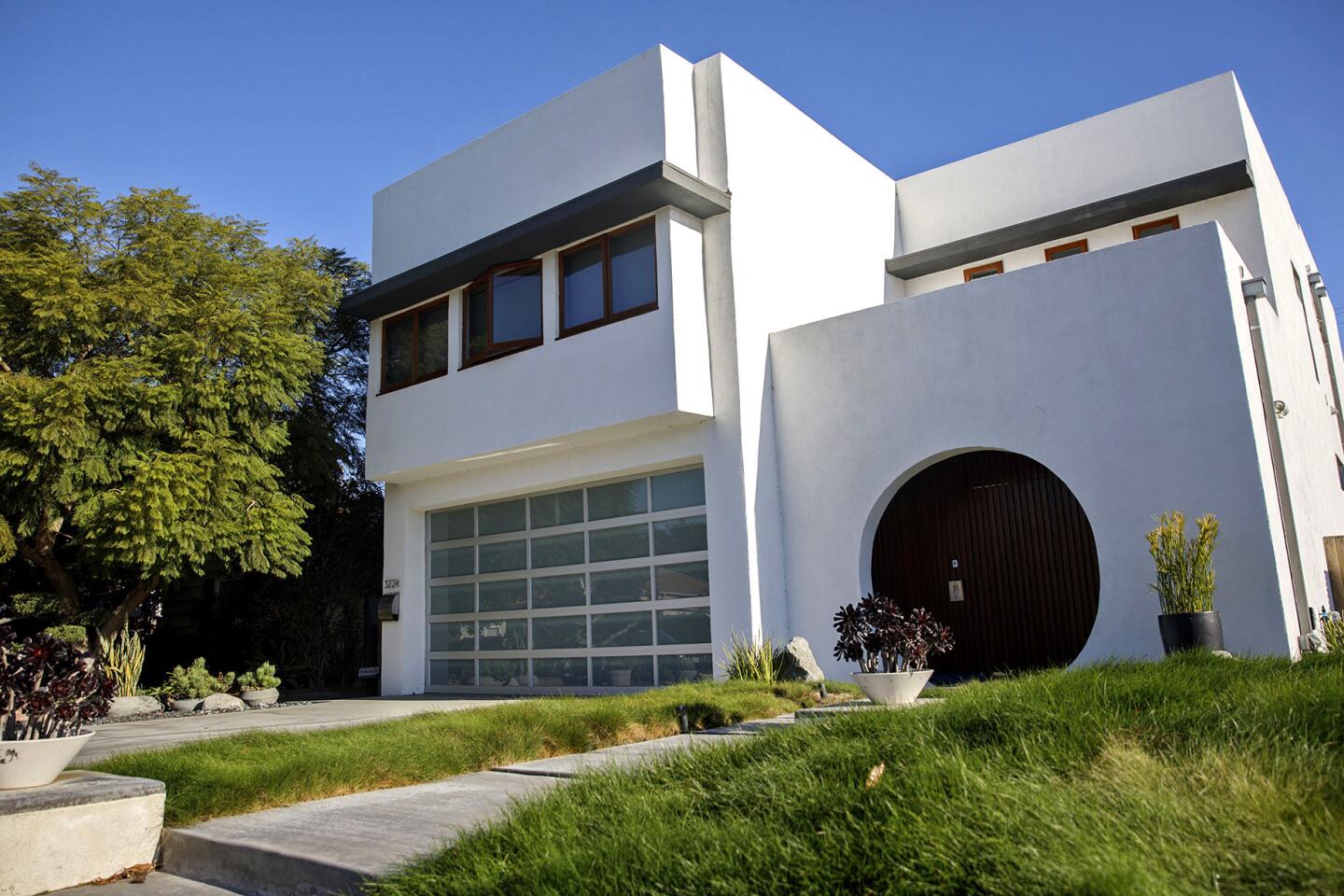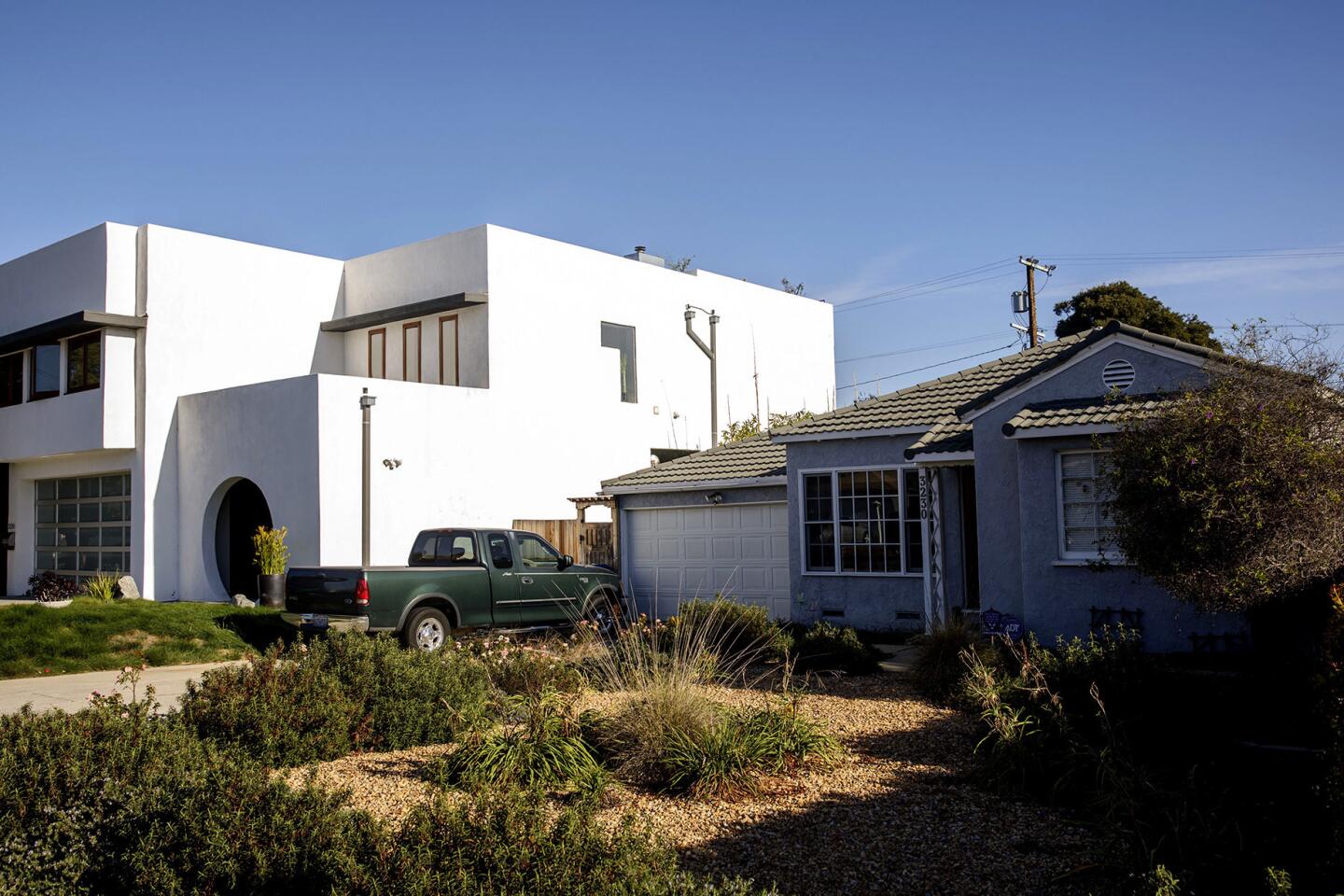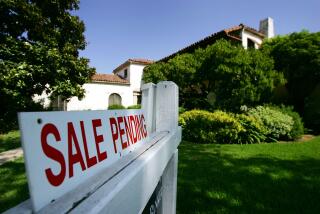Neighborhood Spotlight: Palms’ appeal pushes it beyond the ‘halfway point’
- Share via
On hot summer days in the late 1800s, the well-to-do could flee their sweltering Bunker Hill mansions to take a long, dusty ride on the Los Angeles and Independence Railroad to bask in the cool ocean breezes of Santa Monica.
It was a 16-mile journey by steam train through lima bean fields and cow pastures, with a layover at a tidy little Victorian train station at the halfway point between the two cities, in a whistle-stop known as the Palms.
The tiny settlement, which consisted of a few sparsely developed blocks to the south of the train depot, was a beacon of relative urbanity in the wilderness of the west L.A. Basin, boasting a post office, a hotel and a store called the Half Way House, where farmers could pick up feed for their livestock and travelers could wet their whistles.
When the Pacific Electric Co. bought the railroad and electrified it, making the journey to downtown by Red Car more convenient and affordable, the little town began to grow. Businesses popped up from one end of 4th Street (now Motor Avenue) to the other.
Real estate developers successfully marketed the town — now part of the city of L.A. — as a suburb, with the memorable come-on of “No Cold Winters. No Hot Summers. No Saloons at the Palms.”
Soon, modest Craftsman bungalows lined the residential streets, and aside from some apartment developments near Venice Boulevard, Palms retained that small-town feel for the next 40 years.
In the late 1930s, the previously untouched northwest corner of Palms was developed as an FHA-financed housing tract called Westside Village, where homes were designed with affordability in mind and mass-produced to keep costs down. Ironically, those homes are now some of the most expensive in Palms and the most endangered, with many being bought to be torn down to make way for bigger “architectural” homes.
South of Westside Village, most of the single-family homes in the area are long gone, having been bulldozed decades ago to make way for multi-family units. The wave of redevelopment left Palms the possessor of one of the city’s biggest collection of 1950s and 60s-era dingbat apartments.
The commuters who lived in these apartments didn’t ride the train anymore: The Red Car was gone. A new generation of car-centric Angelenos got up each morning and clogged the new 405 and 10 freeways with their daily east-west migration. The Westside traffic nightmare had begun.
Now the city is fighting back. The recently extended Expo Line traces the same path as the old Los Angeles and Independence Railroad, with the new Palms station just a few hundred feet from the location of the original. Now the halfway point between downtown and the beach has become more popular and convenient than ever.
Neighborhood highlights
Halfway to everywhere: Palms has the whole “location, location, location” thing nailed.
Resurgent on the Westside: Palms isn’t just a place to park your body in between commutes anymore — downtown Culver City is just a short walk away, and Overland Avenue’s restaurant row has become a popular destination.
Neighborhood challenges
Demand, yes; supply, not so much: Because of the conversion of much of the housing stock to apartments, there aren’t many homes available to sell, much less to buy. Competition for homes in Westside Village is tough, and as a result, they don’t come cheap.
Expert insight
Randy Frey of Keller Williams Silicon Beach said Palms is a nice alternative to Mar Vista for people looking for single-family homes.
“The homes are the about the same age, there are some nice hills, and it’s pretty much close to everything,” he said. “South of National is prime Westside Village. As you drop south, the prices decrease.”
That being said, if you want to buy in Palms, “you’re looking at a $1-million entry,” he said.
“Part of the reasoning in the price increase is that builders are coming in and buying with no appraisals,” he said. “Those tear-down prices become comps.”
Market snapshot
In September, based on 16 sales, the median price for single-family home sales in the 90034 ZIP Code was $903,000, according to CoreLogic. That was a 24.8% decrease in price from the same month the previous year.
Report card
Within Palms, Clover Avenue Elementary is among the bright spots with a score of 952 out of 1,000 in the 2013 Academic Performance Index.
Palms Elementary scored 814, and Charnock Road Elementary had a score of 806. Palms Middle scored 878; Alexander Hamilton Senior High scored 741; and Magnolia Science Academy 6 had a score of 828.
More to Read
Sign up for Essential California
The most important California stories and recommendations in your inbox every morning.
You may occasionally receive promotional content from the Los Angeles Times.
